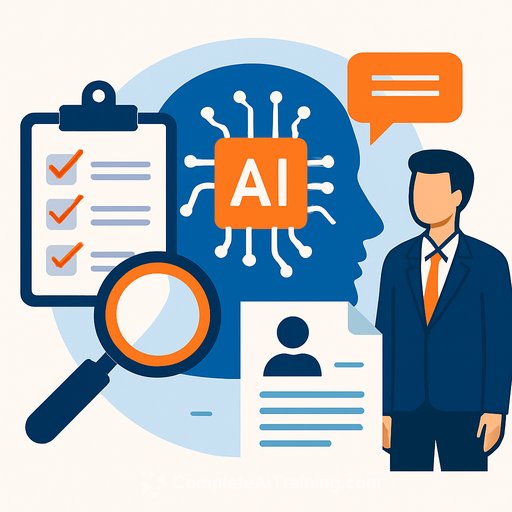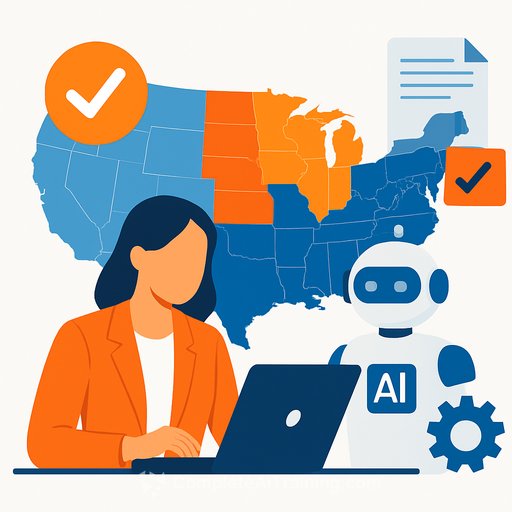HR leaders lack faith managers are AI-skilled - here's the fix
Only eight percent of HR leaders believe their managers can use AI effectively, according to a new Gartner report. Another Gartner datapoint: just 14% of organisations currently support managers on integrating generative AI into daily work. That gap won't close on its own.
The manager role is shifting from collecting information to coordinating insights and predicting needs. As Carolina Engels of Gartner notes, "AI should not be used to replace managers, it can be used as a tool to empower them to spend more meaningful time with their direct reports."
What this means for HR
AI will sit next to the manager, not in their seat. Your job is to make that partnership safe, useful, and measurable. That requires literacy, enablement, and clear guardrails.
A practical plan to enable manager AI performance
- Build AI literacy with hands-on training: Focus on common manager tasks: drafting 1:1 agendas, summarising performance notes, analysing engagement survey comments, writing role profiles, and planning workloads. Run short labs using approved tools and real (sanitised) scenarios. Pair this with internal guidance on prompts, data handling, and quality checks.
- Create peer learning loops: Set up manager working groups to share use cases, prompts, and blockers. Rotate owners monthly and publish "what worked" summaries on your internal wiki.
- Adopt a human-centric approach: Map moments where AI enhances connection: prepping coaching conversations, tailoring recognition, or spotting early burnout signals from text data. Train managers to explain AI-derived insights clearly, with room for human judgment and context.
- Define clear rules and approvals: Partner with Legal and Risk to write simple, visible guidelines: what data is allowed, what tools are approved, how to document usage, and who signs off on new tools. Include ethical use boundaries, PI/PHI restrictions, and vendor risk criteria.
- Ship enablement assets: Provide prompt libraries for HR scenarios, quality checklists, and templates for performance notes, hiring scorecards, and team updates. Integrate AI support where managers already work (email, docs, HRIS), not as a separate portal.
- Measure adoption and outcomes: Track cycle time saved on recurring tasks, perceived quality (peer review), employee sentiment on AI transparency, manager time reallocated to coaching, and error rates. Start with a pilot group and expand based on evidence.
Starter use cases for managers
- Performance and coaching: Turn scattered notes into draft feedback; generate coaching questions; summarise trends across months.
- Hiring: Draft structured interview guides from job profiles; summarise candidate feedback; flag inconsistencies in evaluations.
- Team communications: Produce concise updates; tailor messages for different audiences; summarise meeting transcripts into action lists.
- Work planning: Break initiatives into tasks; estimate timelines; highlight dependencies for resource planning.
- Listening at scale: Cluster open-text comments to spot themes; draft follow-up plans with measurable actions.
Governance that people actually follow
- Acceptable use: Approved tools only; no sensitive personal data without explicit consent and legal review.
- Accountability: Managers remain owners of decisions; AI outputs require human verification.
- Documentation: Keep a simple log of AI-assisted decisions for audits and learning.
- Risk alignment: Anchor your policy to established frameworks such as the NIST AI Risk Management Framework.
How to communicate AI use to employees
- Be transparent: "I used an AI tool to summarise notes; I verified accuracy and added context."
- Reinforce purpose: "This helps me spend more time on coaching, not paperwork."
- Invite feedback: Offer a simple channel for concerns or corrections.
90-day rollout blueprint
- Weeks 1-3: Finalise policy with Legal/Risk; select approved tools; create 10-15 prompts mapped to key manager tasks.
- Weeks 4-8: Run cohort-based training with live practice; launch peer circles; stand up an internal resource hub.
- Weeks 9-12: Measure impact on time saved and quality; refine prompts and guardrails; expand to the next manager cohort.
Resources
Bottom line: Stop assuming managers will figure AI out alone. Equip them with skills, rules, and tools-and measure the lift in time, quality, and employee experience.
Your membership also unlocks:






